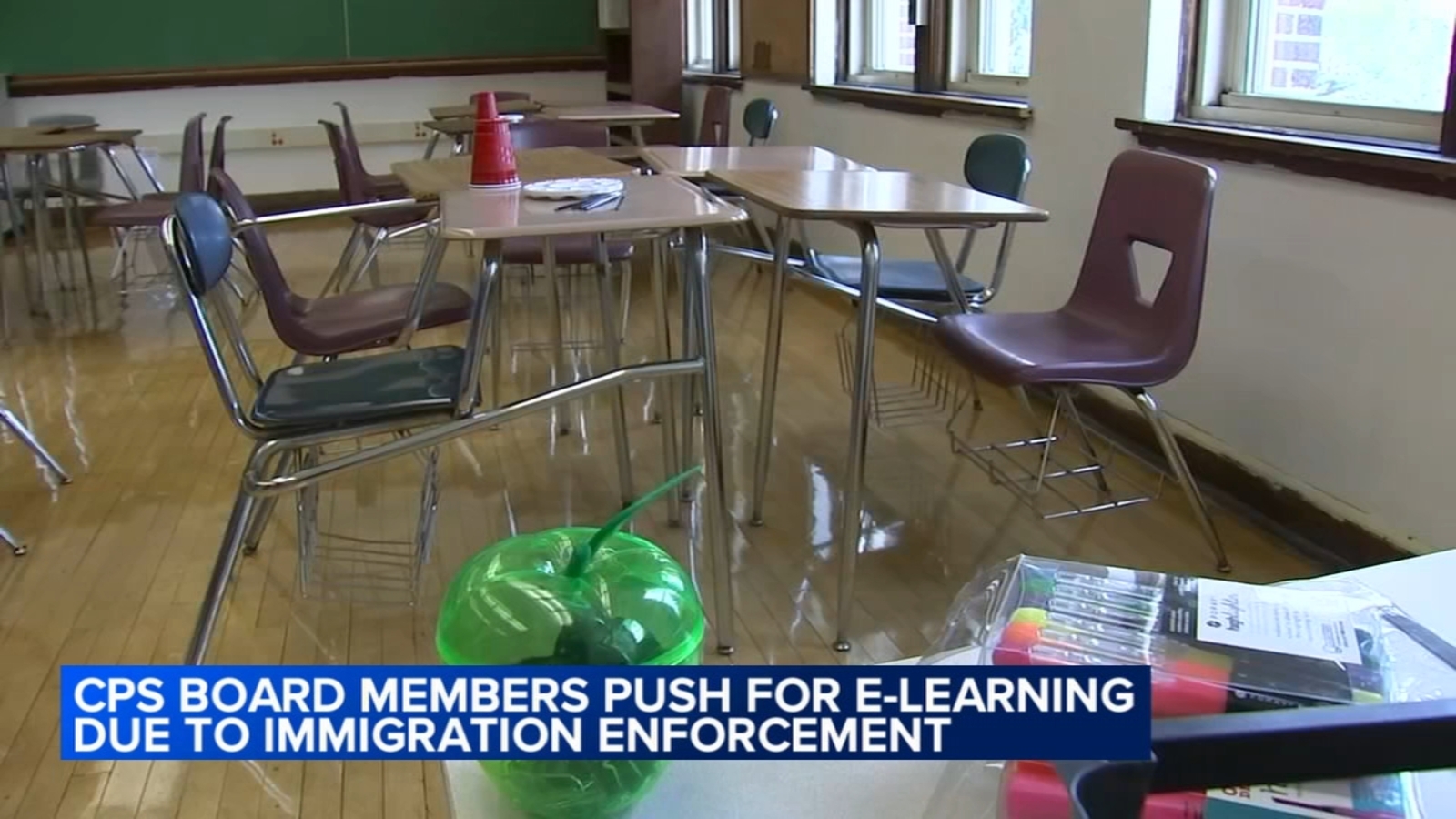Report on the Spotsylvania County School Board Election: Berkeley District
Introduction: Aligning Local Governance with Global Goals
The election for the Spotsylvania County School Board seat in the Berkeley District features two candidates, Larry DiBella and Amanda Monroe. The candidates’ platforms address critical local issues that directly correspond with several United Nations Sustainable Development Goals (SDGs), including SDG 4 (Quality Education), SDG 16 (Peace, Justice and Strong Institutions), and SDG 3 (Good Health and Well-being). This report analyzes their positions through the lens of these global objectives.
SDG 16: Peace, Justice and Strong Institutions
This goal emphasizes the promotion of peaceful and inclusive societies, access to justice, and the development of effective, accountable institutions. School safety and board governance are central themes in this election, aligning with SDG 16 targets.
Promoting Safe and Inclusive Societies (Targets 16.1 & 16.2)
- Larry DiBella: A first sergeant with the Spotsylvania Sheriff’s Office and a former School Resource Officer (SRO), DiBella’s platform is heavily influenced by his experience in thwarting a planned mass shooting. His proposals focus on enhancing school safety by:
- Improving the utilization of SROs within schools.
- Implementing joint training programs for school administrators and the sheriff’s office.
- Leveraging law enforcement expertise to address youth violence issues.
- Amanda Monroe: A former substitute teacher, Monroe’s focus on safety is informed by a personal grievance involving her daughter’s safety in a school restroom. Her campaign highlights the need for robust administrative action to protect children and ensure a safe learning environment for all students.
Developing Effective and Accountable Institutions (Target 16.6)
- DiBella has expressed concern over the past dysfunction of the school board, which has been marked by internal conflict and legal challenges. He advocates for a return to civil, productive governance to build an effective and accountable institution that serves the community.
- Monroe’s campaign calls for action against what she describes as “vile corruption poisoning our schools.” Her platform is centered on increasing institutional accountability and ensuring that parents’ voices and grievances are not silenced by the administration.
SDG 4: Quality Education
Achieving inclusive and equitable quality education is contingent upon creating safe learning environments and retaining qualified educators, both of which are key issues in this race.
Increasing the Supply of Qualified Teachers (Target 4.c)
The retention of high-quality teaching staff is a significant challenge for Spotsylvania County.
- The school division consistently loses talented educators to neighboring counties like Stafford and Prince William, which offer substantially higher salaries.
- DiBella has identified this as a critical issue, stating that while matching competitor salaries is unlikely, he will advocate for more competitive compensation packages to retain qualified teachers, which is essential for maintaining educational quality.
SDG 3: Good Health and Well-being
Ensuring healthy lives and promoting well-being for all ages is a core SDG, with student mental health being a crucial component within the educational system.
Promoting Mental Health and Well-being (Target 3.4)
- Candidate DiBella highlighted a community-based initiative called “Handle with Care.”
- This program facilitates communication between the sheriff’s office and school officials. When a student witnesses or is involved in a traumatic event, law enforcement can alert the school.
- This proactive approach allows school staff to monitor the student’s well-being and connect the family with necessary resources, directly supporting the mental health of children in the community and fostering a supportive learning environment.
Analysis of Sustainable Development Goals in the Article
1. Which SDGs are addressed or connected to the issues highlighted in the article?
-
SDG 4: Quality Education
The article extensively discusses issues central to providing quality education. This includes the safety of the learning environment, the well-being of students, and the critical problem of retaining qualified teachers due to non-competitive salaries. The entire context of a school board election is fundamentally about the governance and quality of education.
-
SDG 16: Peace, Justice and Strong Institutions
This goal is relevant through the focus on school safety, preventing violence, and the governance of the school board itself. Candidate Larry DiBella’s experience in thwarting a “mass shooting plot” and his proposals to address “youth violence issues” connect directly to reducing violence. Furthermore, concerns about the school board’s “dysfunction and chaos,” “yelling and screaming matches,” and candidate Amanda Monroe’s allegations of “vile corruption” and having her voice “silenced” all point to the need for effective, accountable, and transparent institutions.
-
SDG 3: Good Health and Well-being
The article touches upon student well-being, particularly mental health, through the description of the “Handle with Care” initiative. This program is designed to support students who have witnessed or been involved in a “traumatic event at home,” which directly relates to promoting mental health and well-being as a component of overall health.
-
SDG 8: Decent Work and Economic Growth
While a secondary theme, the issue of teacher salaries relates to this goal. The discussion about teachers leaving the county for significantly higher pay elsewhere highlights the importance of fair compensation and decent work for educators. The article notes that Spotsylvania needs to “be competitive in our compensation packages” to retain its workforce.
2. What specific targets under those SDGs can be identified based on the article’s content?
-
Targets under SDG 4 (Quality Education)
- Target 4.a: “Build and upgrade education facilities that are child, disability and gender sensitive and provide safe, non-violent, inclusive and effective learning environments for all.” The article’s primary focus on “school safety” as a top priority, including the use of School Resource Officers (SROs) and thwarting a planned shooting, directly addresses the need for safe and non-violent learning environments.
- Target 4.c: “By 2030, substantially increase the supply of qualified teachers…” The concern over “losing talented staff to northern competitors” due to low salaries is a direct challenge to maintaining a supply of qualified teachers. DiBella’s advocacy for closing the salary gap to make compensation packages “competitive” is an effort to address this target.
-
Targets under SDG 16 (Peace, Justice and Strong Institutions)
- Target 16.1: “Significantly reduce all forms of violence and related death rates everywhere.” The discussion of preventing a “mass shooting plot” and proposals to bring in “gang experts from law enforcement to speak with staff about youth violence issues” are direct actions aimed at reducing violence within the school community.
- Target 16.6: “Develop effective, accountable and transparent institutions at all levels.” DiBella’s concern that the current school board is plagued by “dysfunction and chaos” and Monroe’s allegations of “vile corruption poisoning our schools” highlight the need for a more effective and accountable governing body for the school division.
- Target 16.7: “Ensure responsive, inclusive, participatory and representative decision-making at all levels.” Monroe’s grievance, where she claims “parents’ voices are silenced” and she was “punished for defending my daughter,” points to a perceived lack of responsive and inclusive decision-making by the school administration and board.
-
Target under SDG 3 (Good Health and Well-being)
- Target 3.4: “…promote mental health and well-being.” The “Handle with Care” program, which alerts school officials to students who have experienced trauma so the school can “be proactive about checking on their well-being,” is a direct initiative to promote student mental health.
3. Are there any indicators mentioned or implied in the article that can be used to measure progress towards the identified targets?
-
Indicators for School Safety (Targets 4.a and 16.1)
Implied Indicator: The number and severity of violent incidents in schools. The article uses the thwarted “mass shooting plot” as a key example of a safety failure that was prevented. The presence of “31 police officers in our schools” is also a quantifiable input measure for safety.
-
Indicators for Teacher Supply (Target 4.c)
Mentioned Indicator: The salary gap between Spotsylvania and competing counties. The article gives a specific anecdote of a teacher earning “$30,000 more per year” by moving to another county, which serves as a direct, quantifiable indicator of the compensation problem.
Implied Indicator: Teacher retention/attrition rates. The concern about “losing talented staff” implies that the rate at which teachers leave the district is a key metric for measuring the success of compensation policies.
-
Indicators for Institutional Effectiveness (Targets 16.6 and 16.7)
Implied Indicator: The number of official grievances, lawsuits, or court appearances involving the school board. The article mentions Monroe’s grievance and the board having “several appearances in court” as evidence of dysfunction.
Implied Indicator: Public perception and satisfaction with the school board. DiBella’s statement that the “community’s definitely fed up with the way our board has been run” suggests that community sentiment is a key measure of the board’s performance.
-
Indicators for Student Well-being (Target 3.4)
Implied Indicator: The number of students and families assisted through support programs. The description of the “Handle with Care” program implies that tracking the “notifications” made and the follow-up actions taken to “get the family the resources they might need” would be a way to measure its impact on student well-being.
4. Summary Table of SDGs, Targets, and Indicators
| SDGs | Targets | Indicators (Mentioned or Implied in the Article) |
|---|---|---|
| SDG 4: Quality Education |
4.a: Provide safe, non-violent, inclusive and effective learning environments.
4.c: Substantially increase the supply of qualified teachers. |
– Number and severity of violent incidents in schools (e.g., thwarted shooting plot). – Number of School Resource Officers (SROs) in schools. – Teacher salary gap compared to competing districts (e.g., the “$30,000” difference). |
| SDG 16: Peace, Justice and Strong Institutions |
16.1: Significantly reduce all forms of violence.
16.6: Develop effective, accountable and transparent institutions. 16.7: Ensure responsive, inclusive, and participatory decision-making. |
– Incidents of youth and gang-related violence.
– Number of lawsuits and court appearances by the school board. – Number of official grievances filed by parents or staff. |
| SDG 3: Good Health and Well-being | 3.4: Promote mental health and well-being. | – Number of student notifications and interventions through the “Handle with Care” program. |
| SDG 8: Decent Work and Economic Growth | 8.5: Achieve full and productive employment and decent work for all… including equal pay for work of equal value. | – Competitiveness of teacher compensation packages. |
Source: fredericksburgfreepress.com







